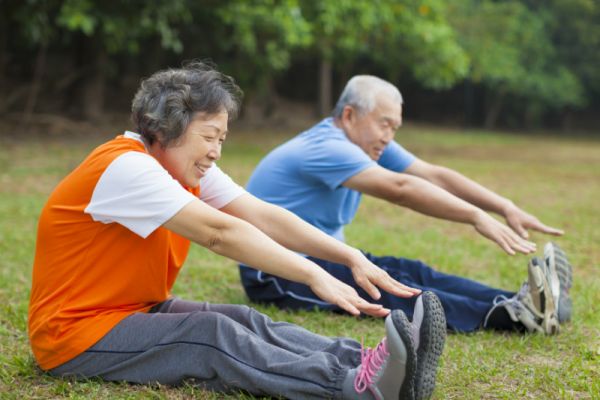Workout Steps After The Age OF 50


Once you hit the half-century mark of your life, exercise becomes even more important for good health. Beyond the age of 50, a multitude of changes occurs in your body, such as changes in flexibility, muscular strength, and bone density. These changes will likely require you to adjust your fitness and exercise programs so that you avoid any injury or other complications. So, our senior wellness consultants have recommended an exercise program that you should know about especially for elders beyond the age of 50.
1. Aerobic exercise
Aerobic exercises such as walking, swimming, dancing, and jogging are some of the best modes of training after the age of 50 for both men and women. Aerobic exercise uses your full body to get your heart pumping and works the large muscles in the body, making it beneficial to your cardiovascular system. So you should do at least 30 minutes of aerobic exercise a day.
2. Strength training
Strength training is about lifting hand weights, pushups, bicep curls, and modified squats which provide the following benefits:
Start this regimen twice a week for 30 to 45 minutes with a hand weight that is comfortable to handle for you for at least twelve repetitions per exercise.
3. Balance training
As the body gets older, it starts losing its natural sense of balance, which results in more falls. So balance training should be done every day for a minimum of two to three minutes. Balance training can be done by standing on tippy-toes or standing on one leg and holding for a few seconds. Spending some time on the treadmill can also help in balance training.
4. Stretching
Older age makes your body less flexible, resulting in a reduced ability to balance due to changes in connective tissues in the body. Ten minutes of regular stretching and flexibility training such as head circles, stretching the calf muscles, yoga, and Pilates can help you increase your flexibility and maintain overall muscle health.
Stretching exercises can help in multiple ways as listed below:
5. Cardio work out
Make cardiovascular exercise a part of your routine as poor cardiovascular health may cause problems such as a rise in cholesterol level, high blood pressure, and also heart attack risk increases in your 50s. You can practice brisk walking, swimming or running. Practice these cardio exercises for about 30 minutes a day.
6. Core training
Old age may make you feel slower or lazier, and you may neglect important muscle groups such as the abdominals. Strong core muscles are necessary for overall strength, especially for the back muscles. So, spending a few minutes performing core-strengthening exercises should be a top priority as you age. Some core training exercises are:
contracting
Final Thoughts
Incorporate the above-mentioned exercises as a part of your daily life. Keep yourself healthy and live with grace in your 50s. It is advisable to contact your senior wellness consultants before starting with any of the exercises listed above or have a history of some health issues. Are you or your loved ones looking for a helping hand to guide you through the healthcare journey? Contact Sarathi Healthcare – the most trusted end-to-end elderly care platform at home in India. We are always there to help you by providing nursing services at home! Check our other care services as well.
Add a comment